

Pushing Academics into Preschool Can Be Harmful
A comprehensive study finds significant drawbacks to pushing academics as early as in preschool. Researchers found that any initial academic gains were quickly erased, and children who attended academic-focused Pre-K were actually behind their peers in elementary and middle school. Another troubling finding was that students who experienced early academic pressure showed dramatic increases in behavioral issues later on. In Waldorf education, we focus on what is developmentally appropriate for each age group, understanding that preschool-age children especially need play, movement, and art, which are all critical to social-emotional health and future academic success.
This article was originally published by Anya Kamenetz on NPR.org
A top researcher says it's time to rethink our entire approach to preschool
Dale Farran has been studying early childhood education for half a century. Yet her most recent scientific publication has made her question everything she thought she knew.
"It really has required a lot of soul-searching, a lot of reading of the literature to try to think of what were plausible reasons that might account for this."
And by "this," she means the outcome of a study that lasted more than a decade. It included 2,990 low-income children in Tennessee who applied to free, public prekindergarten programs. Some were admitted by lottery, and the others were rejected, creating the closest thing you can get in the real world to a randomized, controlled trial — the gold standard in showing causality in science.
Farran and her co-authors at Vanderbilt University followed both groups of children all the way through sixth grade. At the end of their first year, the kids who went to pre-K scored higher on school readiness — as expected.
But after third grade, they were doing worse than the control group. And at the end of sixth grade, they were doing even worse. They had lower test scores, were more likely to be in special education, and were more likely to get into trouble in school, including serious trouble like suspensions.
"Whereas in third grade we saw negative effects on one of the three state achievement tests, in sixth grade we saw it on all three — math, science and reading," says Farran. "In third grade, where we had seen effects on one type of suspension, which is minor violations, by sixth grade we're seeing it on both types of suspensions, both major and minor."
That's right. A statewide public pre-K program, taught by licensed teachers, housed in public schools, had a measurable and statistically significant negative effect on the children in this study.
Farran hadn't expected it. She didn't like it. But her study design was unusually strong, so she couldn't easily explain it away.
"This is still the only randomized controlled trial of a statewide pre-K, and I know that people get upset about this and don't want it to be true."
Why it's a bad time for bad news
It's a bad time for early childhood advocates to get bad news about public pre-K. Federally funded universal prekindergarten for 3- and 4-year-olds has been a cornerstone of President Biden's social agenda, and there are talks about resurrecting it from the stalled-out "Build Back Better" plan. Preschool has been expanding in recent years and is currently publicly funded to some extent in 46 states. About 7 in 10 4-year-olds now attend some kind of academic program.
This enthusiasm has rested in part on research going back to the 1970s. Nobel Prize-winning economist James Heckman, among others, showed substantial long-term returns on investment for specially designed and carefully implemented programs.
To put it crudely, policymakers and experts have touted for decades now that if you give a 4-year-old who is growing up in poverty a good dose of story time and block play, they'll be more likely to grow up to become a high-earning, productive citizen.
What went wrong in Tennessee
No study is the last word. The research on pre-K continues to be mixed. In May 2021, a working paper (not yet peer reviewed) came out that looked at Boston's pre-K program. The study was a similar size to Farran's, used a similar quasi-experimental design based on random assignment, and also followed up with students for years. This study found that the preschool kids had better disciplinary records and were much more likely to graduate from high school, take the SATs and go to college, though their test scores didn't show a difference.
Farran believes that, with a citywide program, there's more opportunity for quality control than in her statewide study. Boston's program spent more per student, and it also was mixed-income, whereas Tennessee's program is for low-income kids only.
So what went wrong in Tennessee? Farran has some ideas — and they challenge almost everything about how we do school. How teachers are prepared, how programs are funded and where they are located. Even something as simple as where the bathrooms are.
In short, Farran is rethinking her own preconceptions, which are an entire field's preconceptions, about what constitutes quality pre-K.
Do kids in poverty deserve the same teaching as rich kids?
"One of the biases that I hadn't examined in myself is the idea that poor children need a different sort of preparation from children of higher-income families."
She's talking about drilling kids on basic skills. Worksheets for tracing letters and numbers. A teacher giving 10-minute lectures to a whole class of 25 kids who are expected to sit on their hands and listen, only five of whom may be paying any attention.
"Higher-income families are not choosing this kind of preparation," she explains. "And why would we assume that we need to train children of lower-income families earlier?"
Farran points out that families of means tend to choose play-based preschool programs with art, movement, music and nature. Children are asked open-ended questions, and they are listened to.
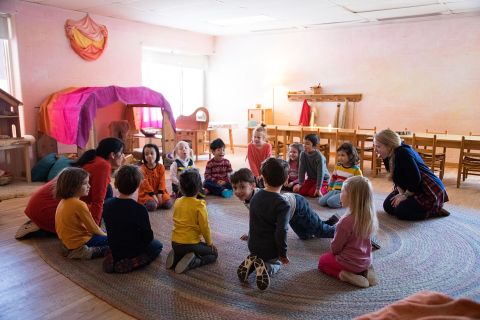
This is not what Farran is seeing in classrooms full of kids in poverty, where "teachers talk a lot, but they seldom listen to children." She thinks that part of the problem is that teachers in many states are certified for teaching students in prekindergarten through grade 5, or sometimes even pre-K-8. Very little of their training focuses on the youngest learners.
So another major bias that she's challenging is the idea that teacher certification equals quality. "There have been three very large studies, the latest one in 2018, which are not showing any relationship between quality and licensure."
Putting a bubble in your mouth
In 2016, Farran published a study based on her observations of publicly funded Tennessee pre-K classrooms similar to those included in this paper. She found then that the largest chunk of the day was spent in transition time. This means simply moving kids around the building.
Partly this is an architectural problem. Private preschools, even home-based day cares, tend to be laid out with little bodies in mind. There are bathrooms just off the classrooms. Children eat in, or very near, the classroom, too. And there is outdoor play space nearby with equipment suitable for short people.
Putting these same programs in public schools can make the whole day more inconvenient.
"So if you're in an older elementary school, the bathroom is going to be down the hall. You've got to take your children out, line them up and then they wait," Farran says. "And then, if you have to use the cafeteria, it's the same thing. You have to walk through the halls, you know: 'Don't touch your neighbor, don't touch the wall, put a bubble in your mouth because you have to be quiet.' "
One of Farran's most intriguing conjectures is that this need for control could explain the extra discipline problems seen later on in her most recent study.
"I think children are not learning internal control. And if anything, they're learning sort of an almost allergic reaction to the amount of external control that they're having, that they're having to experience in school."
In other words, regularly reprimanding kids for doing normal kid stuff at 4 years old, even suspending them, could backfire down the road as children experience school as a place of unreasonable expectations.
We know from other research that the control of children's bodies at school can have disparate racial impact. Other studies have suggested that Black children are disciplined more often in preschool, as they are in later grades. Farran's study, where 70% of the kids were white, found interactions between race, gender, and discipline problems, but no extra effect of attending preschool was detected.
Where to go from here
The United States has a child care crisis that COVID-19 both intensified and highlighted. Progressive policymakers and advocates have tried for years to expand public support for child care by "pushing it down" from the existing public school system, using the teachers and the buildings.
Farran praises the direction that New York City, for one, has taken instead: a "mixed-delivery" program with slots for 3- and 4-year-olds. Some kids attend free public preschool in existing nonprofit day care centers, some in Head Start programs and some in traditional schools.
But the biggest lesson Farran has drawn from her research is that we've simply asked too much of pre-K, based on early results from what were essentially showcase pilot programs. "We tend to want a magic bullet," she says.
"Whoever thought that you could provide a 4-year-old from an impoverished family with 5 1/2 hours a day, nine months a year of preschool, and close the achievement gap, and send them to college at a higher rate?" she asks. "I mean, why? Why do we put so much pressure on our pre-K programs?"
We might actually get better results, she says, from simply letting little children play.
The Waldorf Approach to Reading
Could pushing kids to read too early be counterproductive? Studies have shown that academic demands on young children have increased significantly in the last few decades, with mixed results. Many children feel unnecessary stress in response to early academic pressure, with long-term negative effects. In the Waldorf approach, children build their foundation to reading and writing organically, learning letters and sounds through stories, songs, word games, and more. This low-stress, natural approach starts in preschool and is integrated into every subject, every day. Our story-first approach helps children feel excited, rather than pressured, to learn to read and write, and engages their natural curiosity and love of learning.
This article was originally published by Whitney Ballard on the Bored Teachers website.
Study Shows: Pushing Kids to Read Too Much, Too Early is Counterproductive
It’s no secret that there is a constant push to do MORE and be BETTER in education. It often feels like a never-ending competition. If your child performs well, you “should” push him or her to be better than their peers. Your school may perform well, but you “should” push for the best in the state. Your state may do well, but you “should” push to beat other regions. In terms of news, our country is “so far behind”. These not-so-subtle messages are pushing our students, teachers, and all other school personnel far beyond age-appropriate performance levels. It starts with reading. Exactly why are we pushing kids to read so early?
In fact, learning to read too early can actually be counterproductive. Studies show it can lead to a variety of problems including increased frustration, misdiagnosed disorders, and unnecessary time and money spent teaching kids skills they don’t even have the skillset to understand yet.
“Escalating Academic Demand in Kindergarten: Counterproductive Policies” is one study that exemplifies the reverse of pushing children to read before they are ready:
“Narrow emphasis on isolated reading and numeracy skills is detrimental even to the children who succeed and is especially harmful to children labeled as failures…academic demands in kindergarten and first grade are considerably higher today than 20 years ago and continue to escalate.”
While it may seem like our kids are being pushed to succeed, they are often pushed too hard. They eventually accept defeat because it becomes increasingly difficult for students to keep up with impossible standards. Once kids “fall behind” according to educational standards, it creates an “I’m not good enough” mentality. This often sticks with them through school. The early years are extremely important for building confidence and a positive attitude. Yet every year, we fill the early years with more requirements that are proven to be confidence-killers and negative reinforcements.
There are virtually zero studies that show proof that reading early actually helps kids succeed long-term.
From a secondary teacher’s perspective, I have never been able to tell which child learned to read first, or which child could recite their ABCs before they were 3 years old.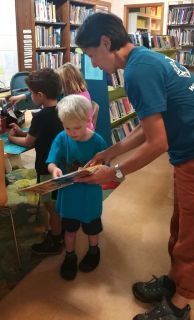 I could, however, tell which students felt confident in his or her abilities. Likewise, I could tell which students struggled to believe in themselves and which students expected to fail. As a teacher, I worry that we are putting skills like reading above social skills and confidence-building.
I could, however, tell which students felt confident in his or her abilities. Likewise, I could tell which students struggled to believe in themselves and which students expected to fail. As a teacher, I worry that we are putting skills like reading above social skills and confidence-building.
The teacher part of me can see the long-term struggle, but the parent-of-young-kids part of me can see the current stress. It is extremely difficult not to buy into the hype—the kind that tells you your young children need every educational toy on the market. Society tells mamas (and daddies) that their children are falling behind in sneaky ways through the use of advertisements, social media, etc.
Parents are constantly seeing children praised for their outstanding achievements and are being asked to compare their own children with the ‘exception’, not the rule. Many kids WANT to accelerate the process and constantly learn MORE. That is perfectly fine. Many kids also want to take their sweet time. That is also perfectly fine.
No two kids are the same. And no two students are the same. No kid should be pushed too hard too early to do anything, including reading.
As a teacher, I am constantly reassuring parents that their children are on track, despite the constant “push” for more. And as a parent, I am constantly re-centering myself on the idea that our children are natural learners who learn more from the world around them at a young age. As a friend, I want to encourage you to research the lack of benefits of learning to read too early—and look to your child for cues on when he or she is actually ready.
What age is truly the right age to learn to read? It depends on the individual.
In the meantime, let’s focus on building confidence, fostering creativity, and allowing our young kids to learn in the ways that suit them best.
Research Supports the Benefits of Arts Education
Research shows that students who engage in the arts at school perform better in math, reading, and writing, and have an enhanced social and emotional experience. Waldorf education integrates an array of arts into the curriculum to support academic growth, develop communication and collaboration skills, and give children a well-rounded, joyful educational journey!
This article was originally written by Brian Kisida and Daniel H. Bowen and published by the Brookings Institution

A critical challenge for arts education has been a lack of empirical evidence that demonstrates its educational value. Though few would deny that the arts confer intrinsic benefits, advocating “art for art’s sake” has been insufficient for preserving the arts in schools—despite national surveys showing an overwhelming majority of the public agrees that the arts are a necessary part of a well-rounded education.
Over the last few decades, the proportion of students receiving arts education has shrunk drastically. This trend is primarily attributable to the expansion of standardized-test-based accountability, which has pressured schools to focus resources on tested subjects. As the saying goes, what gets measured gets done. These pressures have disproportionately affected access to the arts in a negative way for students from historically underserved communities. For example, a federal government report found that schools designated under No Child Left Behind as needing improvement and schools with higher percentages of minority students were more likely to experience decreases in time spent on arts education.
We recently conducted the first ever large-scale, randomized controlled trial study of a city’s collective efforts to restore arts education through community partnerships and investments. Building on our previous investigations of the impacts of enriching arts field trip experiences, this study examines the effects of a sustained reinvigoration of schoolwide arts education. Specifically, our study focuses on the initial two years of Houston’s Arts Access Initiative and includes 42 elementary and middle schools with over 10,000 third- through eighth-grade students. Our study was made possible by generous support of the Houston Endowment, the National Endowment for the Arts, and the Spencer Foundation.
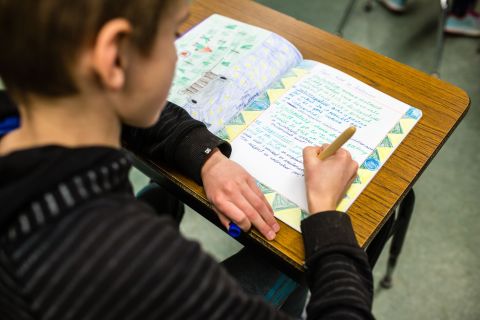
Due to the program’s gradual rollout and oversubscription, we implemented a lottery to randomly assign which schools initially participated. Half of these schools received substantial influxes of funding earmarked to provide students with a vast array of arts educational experiences throughout the school year. Participating schools were required to commit a monetary match to provide arts experiences. Including matched funds from the Houston Endowment, schools in the treatment group had an average of $14.67 annually per student to facilitate and enhance partnerships with arts organizations and institutions. In addition to arts education professional development for school leaders and teachers, students at the 21 treatment schools received, on average, 10 enriching arts educational experiences across dance, music, theater, and visual arts disciplines. Schools partnered with cultural organizations and institutions that provided these arts learning opportunities through before- and after-school programs, field trips, in-school performances from professional artists, and teaching-artist residencies. Principals worked with the Arts Access Initiative director and staff to help guide arts program selections that aligned with their schools’ goals.
Our research efforts were part of a multisector collaboration that united district administrators, cultural organizations and institutions, philanthropists, government officials, and researchers. Collective efforts similar to Houston’s Arts Access Initiative have become increasingly common means for supplementing arts education opportunities through school-community partnerships. Other examples include Boston’s Arts Expansion Initiative, Chicago’s Creative Schools Initiative, and Seattle’s Creative Advantage.
Through our partnership with the Houston Education Research Consortium, we obtained access to student-level demographics, attendance and disciplinary records, and test score achievement, as well as the ability to collect original survey data from all 42 schools on students’ school engagement and social and emotional-related outcomes.
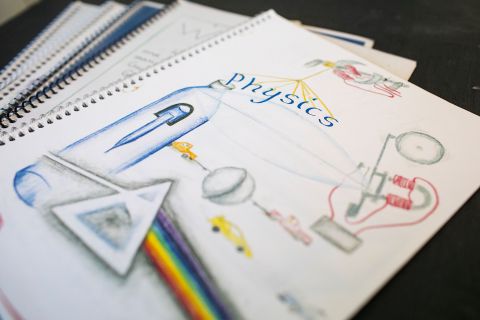
We find that a substantial increase in arts educational experiences has remarkable impacts on students’ academic, social, and emotional outcomes. Relative to students assigned to the control group, treatment school students experienced a 3.6 percentage point reduction in disciplinary infractions, an improvement of 13 percent of a standard deviation in standardized writing scores, and an increase of 8 percent of a standard deviation in their compassion for others. In terms of our measure of compassion for others, students who received more arts education experiences are more interested in how other people feel and more likely to want to help people who are treated badly.
When we restrict our analysis to elementary schools, which comprised 86 percent of the sample and were the primary target of the program, we also find that increases in arts learning positively and significantly affect students’ school engagement, college aspirations, and their inclinations to draw upon works of art as a means for empathizing with others. In terms of school engagement, students in the treatment group were more likely to agree that school work is enjoyable, makes them think about things in new ways, and that their school offers programs, classes, and activities that keep them interested in school. We generally did not find evidence to suggest significant impacts on students’ math, reading, or science achievement, attendance, or our other survey outcomes, which we discuss in our full report.
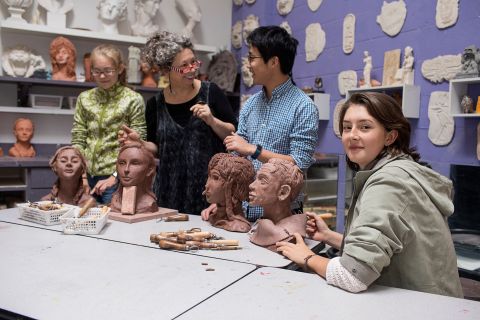
As education policymakers increasingly rely on empirical evidence to guide and justify decisions, advocates struggle to make the case for the preservation and restoration of K-12 arts education. To date, there is a remarkable lack of large-scale experimental studies that investigate the educational impacts of the arts. One problem is that U.S. school systems rarely collect and report basic data that researchers could use to assess students’ access and participation in arts educational programs. Moreover, the most promising outcomes associated with arts education learning objectives extend beyond commonly reported outcomes such as math and reading test scores. There are strong reasons to suspect that engagement in arts education can improve school climate, empower students with a sense of purpose and ownership, and enhance mutual respect for their teachers and peers. Yet, as educators and policymakers have come to recognize the importance of expanding the measures we use to assess educational effectiveness, data measuring social and emotional benefits are not widely collected. Future efforts should continue to expand on the types of measures used to assess educational program and policy effectiveness.
These findings provide strong evidence that arts educational experiences can produce significant positive impacts on academic and social development. Because schools play a pivotal role in cultivating the next generation of citizens and leaders, it is imperative that we reflect on the fundamental purpose of a well-rounded education. This mission is critical in a time of heightened intolerance and pressing threats to our core democratic values. As policymakers begin to collect and value outcome measures beyond test scores, we are likely to further recognize the value of the arts in the fundamental mission of education.
Talking With our Littlest Students About Race
Adapted from Acorn Hill Waldorf Kindergarten
Children are constantly picking up on what is OK to talk about, what is off limits, and how adults react to the topic. Here's how to begin or continue a discussion about race with your child.
Like many other topics, race can be challenging for adults to discuss among themselves, let alone with their children. But while open dialogue about race is limited in our society, that doesn't mean you can't make decisions and set the tone for discussions about race in your home. Talking with young children about race is an opportunity - one you may or may not have experienced when you were growing up.
Some well-meaning parents feel if they do not address the topic of race, their children will be "color-blind." But the reality is that race does have meaning in our society. Your conversations with your child will depend on your own racial identity, the racial make-up of your family (immediate and extended), and your values regarding race—both those you express and those you imply.
Like other crucial conversations you might be beginning to have with your child right now, race discussions should start early and evolve as your child grows.
What They Understand
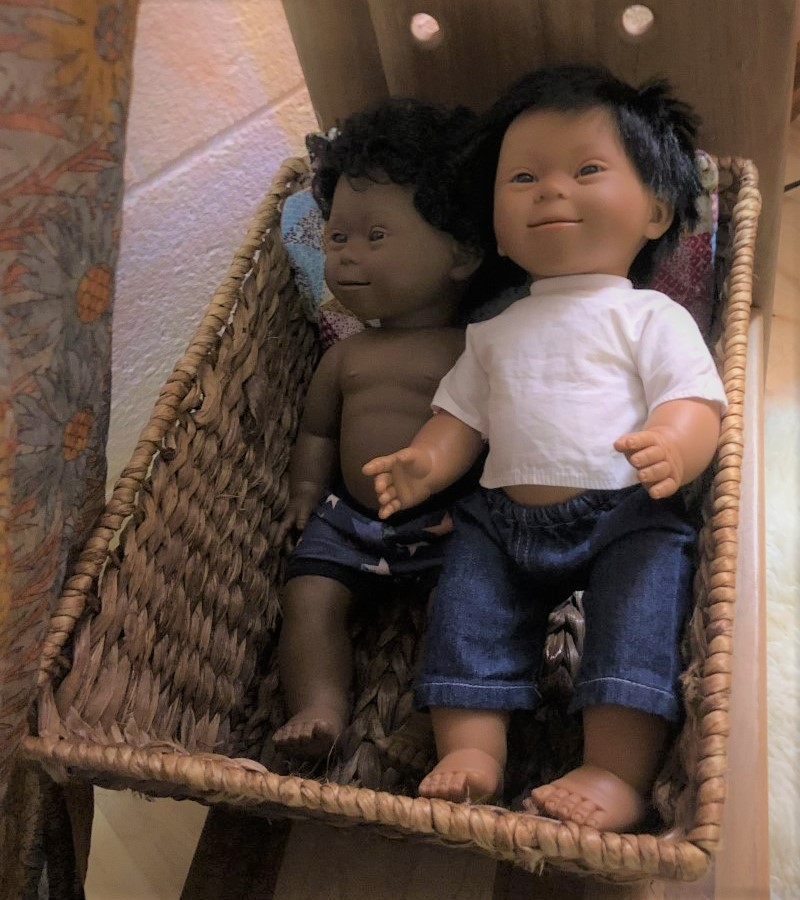 Kids under 24 months do not understand the adult meaning of race: the historical implications of it or how the history and current meaning of race affects our society, but babies and toddlers are beginning to notice differences in appearance. It might be that the child simply looks longer at or perhaps points to a person who looks different from the people she's most used to seeing in her everyday routines. During these moments, the child looks primarily to the adult to gauge their own interest and reaction—toddlers this young are still reliant on their parents' opinions and actions to shape their own. This goes without saying, but how you act around and discuss people from your own culture and other cultures is what your child will first consider appropriate. Toddlers internalize the beliefs of their family and immediate society, a process that will continue throughout their development.
Kids under 24 months do not understand the adult meaning of race: the historical implications of it or how the history and current meaning of race affects our society, but babies and toddlers are beginning to notice differences in appearance. It might be that the child simply looks longer at or perhaps points to a person who looks different from the people she's most used to seeing in her everyday routines. During these moments, the child looks primarily to the adult to gauge their own interest and reaction—toddlers this young are still reliant on their parents' opinions and actions to shape their own. This goes without saying, but how you act around and discuss people from your own culture and other cultures is what your child will first consider appropriate. Toddlers internalize the beliefs of their family and immediate society, a process that will continue throughout their development.
As the children grow, so does their awareness and their misconceptions about race. Studies have shown that by three years old, children are choosing playmates by race and by ages 4-6 their racial prejudices peak. By ages 5 and 6, children are already holding many of the viewpoints that the adults around them have on race. Not speaking to them about the topic means that they are making their own assumptions, and forming their own biases
What to Say
Say something! Your child's understanding of race begins both with what you will talk about and what you do not discuss. Children learn that when they ask a question about someone's race and they are shushed, it's not something they can discuss and is therefore taboo. Talking about race normalizes the topic and makes it less scary for kids.
As any parent who's caught their toddler staring at someone in the checkout aisle or pointing to a passerby in the mall will tell you, racial observations may be embarrassing. It really is important, though, for you to address your child's observations and take that moment to acknowledge the differences they are taking note of.
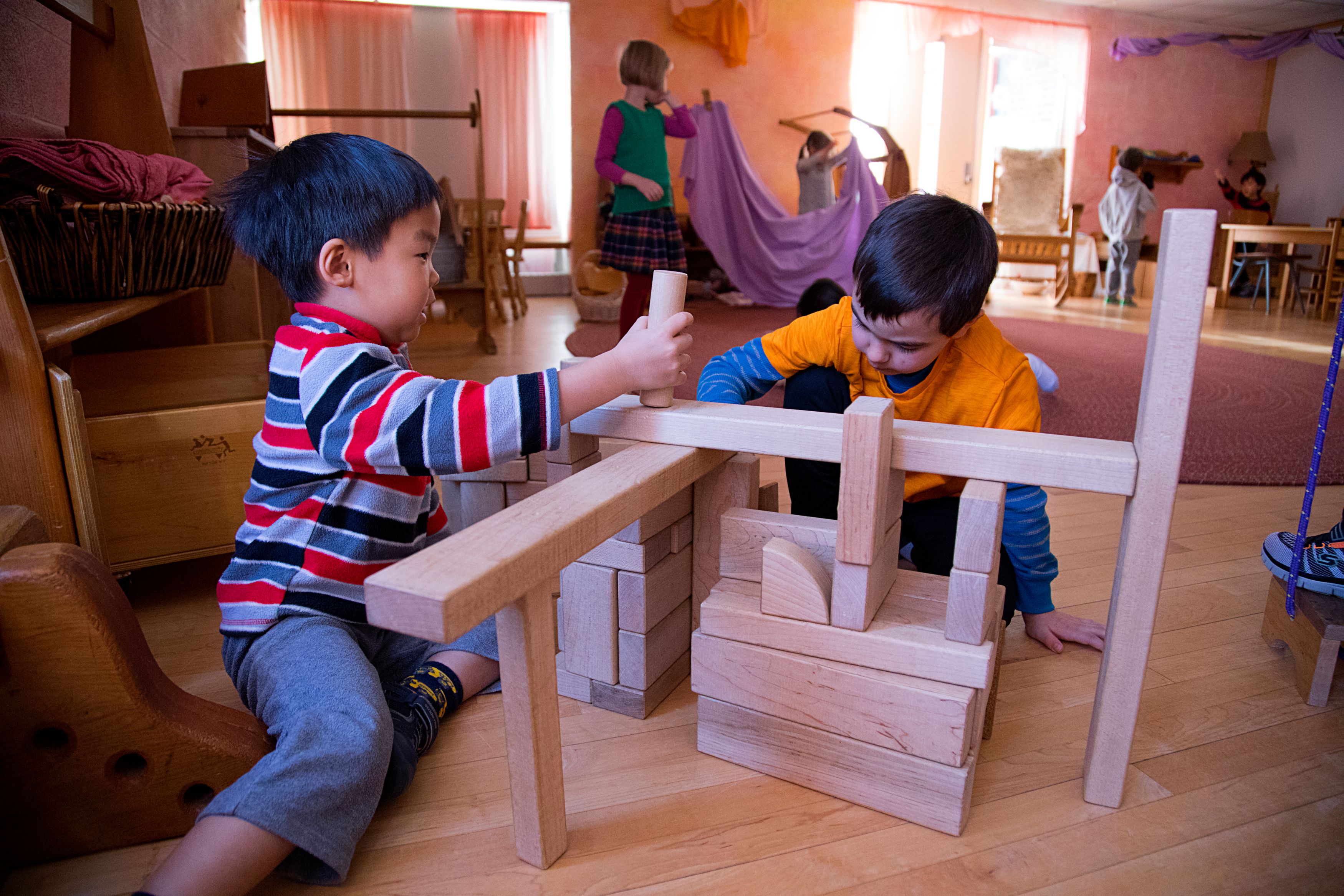 When your child points out (or later asks questions about) people with different skin color than his, address it. For example, if your child is white and asks why an African-American child's skin is brown, explain, "Grownups and kids have all different skin colors. Some have tan and some have brown." When possible, use accurate ethnicity language with your child: "She is white (or Caucasian)/African American (or black)/Latinx (or Hispanic)/Asian-American," etc.
When your child points out (or later asks questions about) people with different skin color than his, address it. For example, if your child is white and asks why an African-American child's skin is brown, explain, "Grownups and kids have all different skin colors. Some have tan and some have brown." When possible, use accurate ethnicity language with your child: "She is white (or Caucasian)/African American (or black)/Latinx (or Hispanic)/Asian-American," etc.
Though toddlers likely won't ask questions about race, children in preschool or grade school will have the vocabulary to articulate observations. Your child might ask why a person has skin a different color or hair a different texture than his. When he does make an observation or inquire about a race, answer the question and give correct information, which may mean doing some homework yourself. Think about and take responsibility for the stereotypes and assumptions we all have about race.
These are some basic ways you can prepare for a lifetime of conversations with your child about ethnicity and diversity
Self-reflect. Take some time and think about your own racial identity, the assumptions you hold, and what lessons you would like to teach your children about race. Talking with friends, family, and other parents can be really helpful. Look for other parents who are interested in open dialogue about race in their families. Talking with other adults will also give you clarity and increase your comfort level when answering questions if this is a challenge for you. Remember, this is often a scary process for adults. Understanding and challenging that fear will be helpful in conversations in your family.
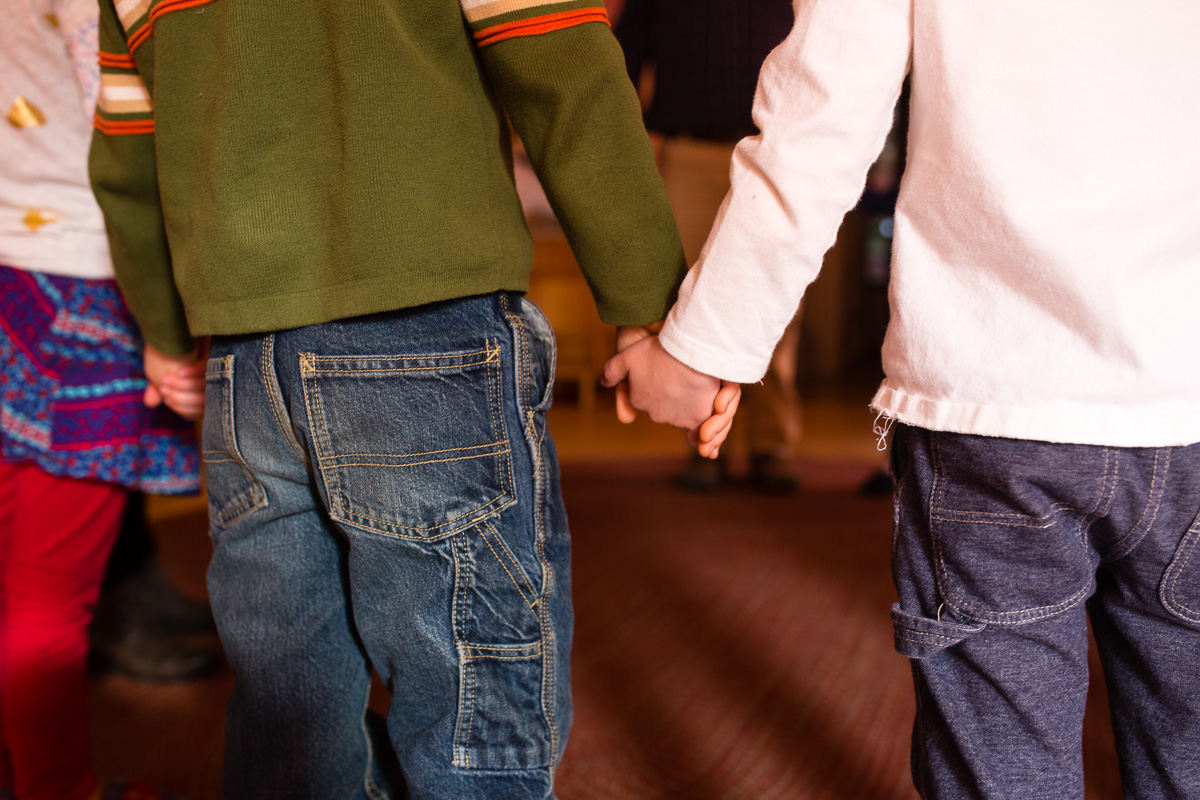 Don't avoid the topic. Particularly in white families, some parents decide to not discuss racial differences. This reinforces that it is a taboo subject for your children. When you have had early conversations about appearances, for example, as your child gets older, you can also begin discussions about racism.
Don't avoid the topic. Particularly in white families, some parents decide to not discuss racial differences. This reinforces that it is a taboo subject for your children. When you have had early conversations about appearances, for example, as your child gets older, you can also begin discussions about racism.
Work on Empathy. Developing empathy comes from knowing your own feelings and beginning to understand feelings in others. How you interact with other people and respond to situations works on shaping that within your child. It may seem small and simple, but it is laying the foundation for how they treat, advocate for and think of others. Here are some Teaching Empathy Tips.
Look at your environment. Self-reflecting also means taking inventory of the images, stories and people that your child sees on a daily basis. Looking at your child’s toys, books, media influences, family, friends and neighborhood/community allows you to see areas for growth or conversation.
Read Books. Books are wonderful because they serve as windows into another’s world, reflections into your own, and give children the ability to connect with others. They also serve as good talking points for bringing up discussions about differences, injustice, and provide ways to celebrate and normalize diversity. Our Early Childhood Library offers a great selection of titles.

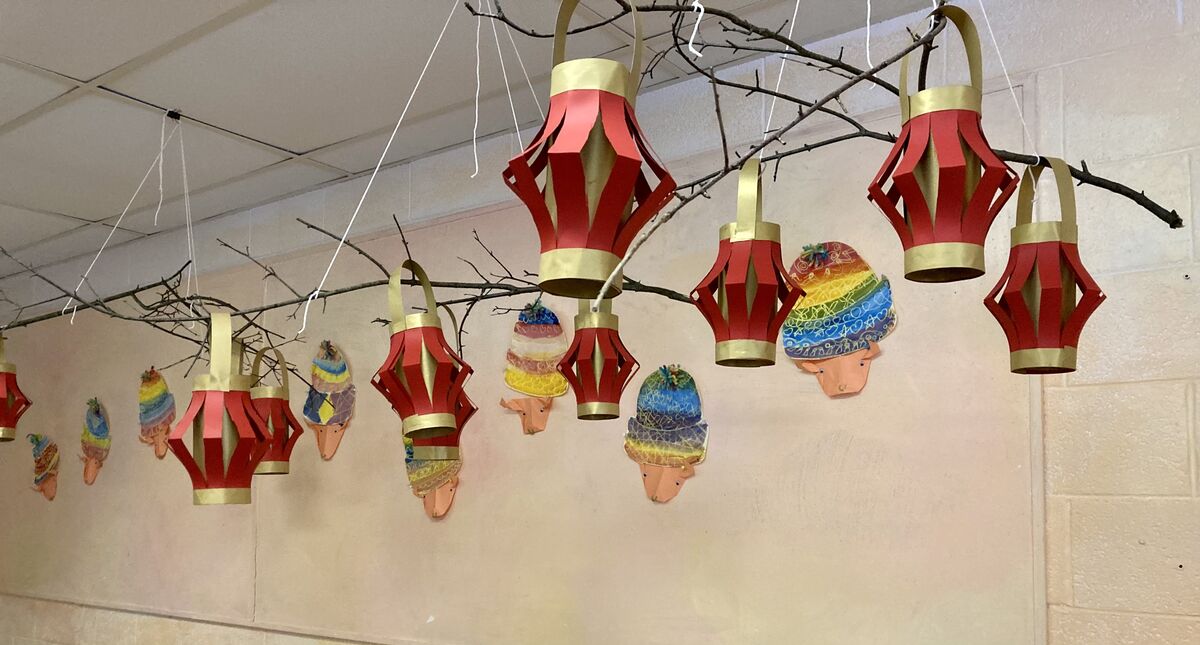


If you are looking for the best game slots online in Southeast Asia, Rajawali888 or Rajawali888 it will be more interesting
For those curious about the Metaverse, don’t miss visiting our website
If you are looking for Zoho CRM Setup and Customization ,check out our website